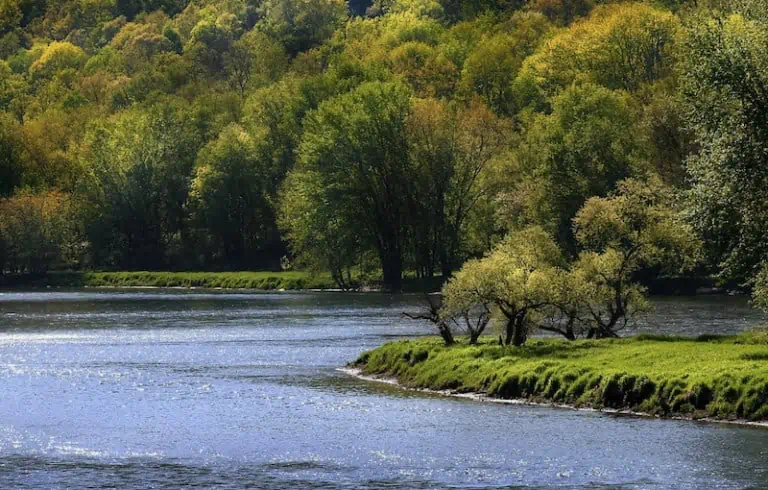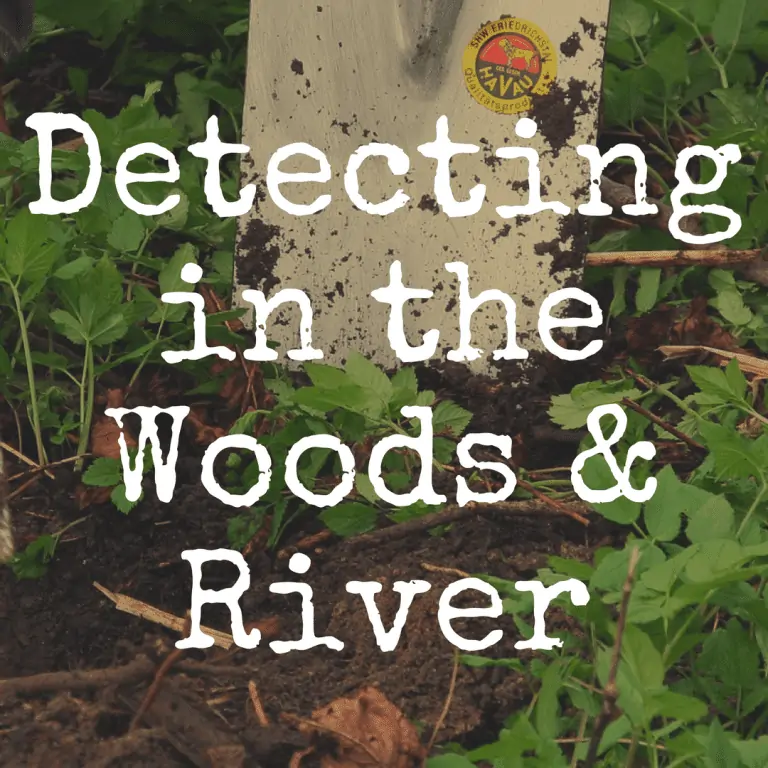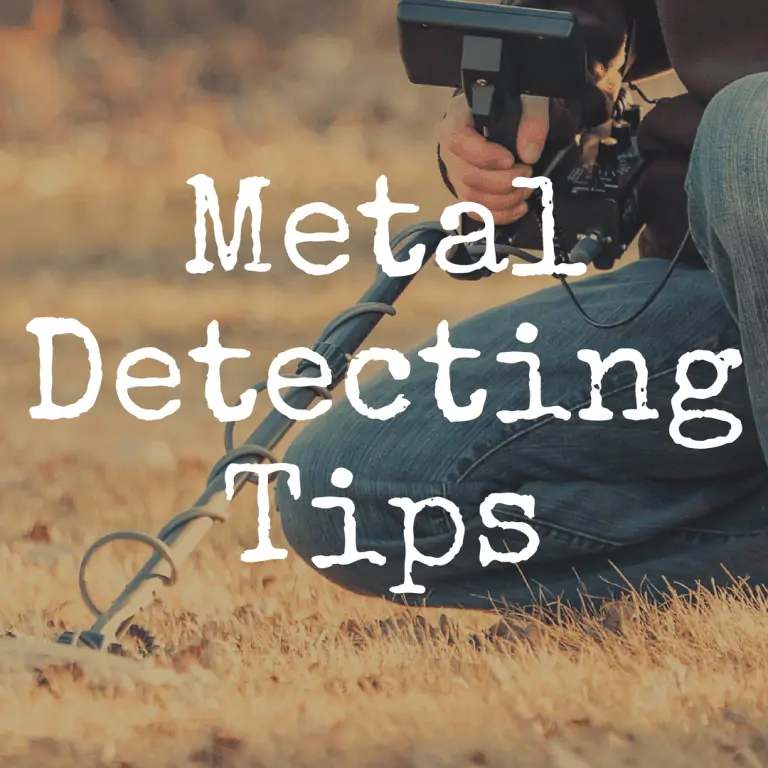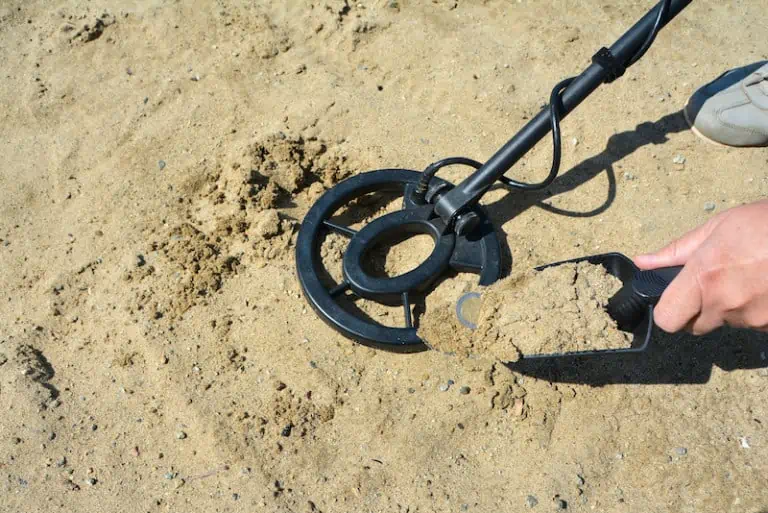25 Tips for Metal Detecting for Silver and Coins
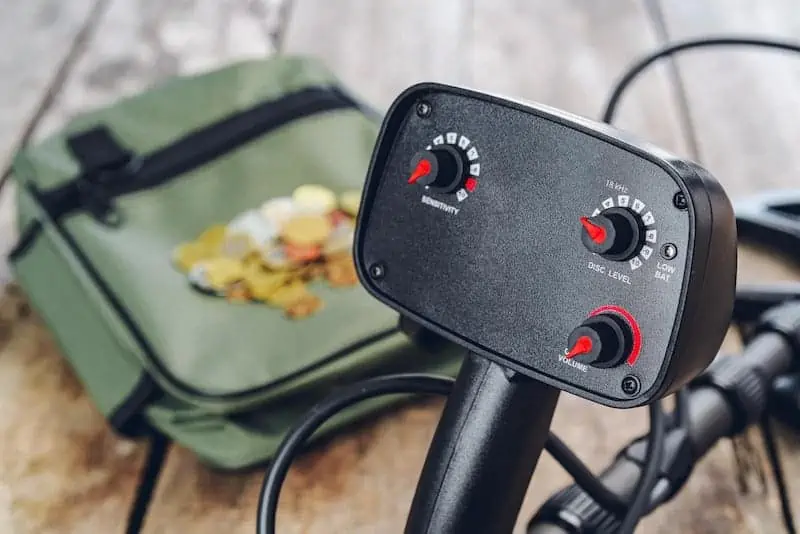
Metal detecting for silver, coins, or silver coins is a rewarding hobby. The United States is the world’s 3rd largest producer of silver. Many sites have old silver coins, relics, and jewelry. So, whether your goal is native silver ore, silver relics, silver coins, or all of these, this article will give you some tips to make your search successful.
And to better help you, please take a look at a handful of metal detectors that we think are pretty awesome to use if you’re on the hunt for silver or coins in general:
| Photo | Model | Price | Features |
|---|---|---|---|
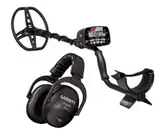 | Garrett AT Max | $$$ | Waterproof to 10 feet |
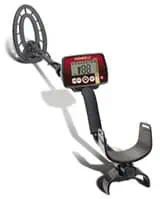 | Fisher F22 | $$ | 9″ Triangulated Concentric Coil |
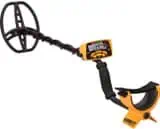 | Garrett Ace 400 | $$$ | 8.5 x 11" DD coil |
 | Minelab Vanquish 540 | $ | Search Modes: Coin, Relic, Jewelry, Custom, All Metal |
1) Research
Research is always the first tip I give anyone going out to metal detect. It is important you know what possible items can be found in your chosen search area. Not all areas have gold, silver, coins, or relics. Old homestead sites often have silver coins or relics. Check with your local library, or town hall to get information about where old homestead sites are. They are often found in wooded area and can be in disrepair. Make sure to take precautions when searching in old abandoned buildings as the structures can be compromised and not safe to enter. When searching for native silver, the same applies. Check geologic records to see if native silver has been found in your area.
2) Best Metal Detectors for Silver
There are 2 types of metal detectors: VLF (very low frequency) and PI (pulse induction). They both have their pros and cons. Some metal detectors are built to find specific types of metals. Some areas have high levels of soil mineralization, hot rocks, or black sands which can all make VLF metal detectors act up. PI machines typically do better in these areas, or for finding gold. You don’t necessarily have to find a metal detector specifically for silver.
You can choose one that has a coin or relic mode and get good results. Silver is a higher conductive metal, so lower frequencies work very well for finding silver. A PI machine will still find silver, and they do better in saltwater, wet sand, and mineralized soils. They can be much more expensive and have a higher learning curve than VLF machines.
It really depends on your preference. Regardless of which you choose, always buy a machine that fits your skill level. If you buy a top of the line detector with a steep learning curve, and don’t have the experience behind you, you will be frustrated with the machine and whole metal detecting process. I recommend an entry-level machine if this is your first metal detector.
I always recommend buying a metal detector from one of the top manufacturers: Fisher, Garrett, White’s, Minelab, Teknetics, and Nokta Makro. Each of these manufacturers makes entry-level, intermediate, and advanced metal detectors. Because silver is on the lower end of the frequency spectrum you would be find using a lower-end metal detector operating on VLF technology. Garrett’s Ace line is a great entry or intermediate detector series, and Minelab’s newly released Vanquish series is a great multiple frequency metal detector line.
I found one silver coin and several pieces of native silver ore last summer while detecting in the mountains of Utah with my Fisher F11 VLF detector. It operates at a frequency of 7.69 kHz. The area had a lot of mineralization, so the detector had some interference issues. But I will still able to find several pieces of silver with it. Fisher also makes a model called the F22, which is one of the best affordable metal detectors. It has settings for jewelry, coins, and artifacts, as well as a custom search mode.

Below, please take a moment to view some of the best selling metal detectors currently still on sale at Amazon:
| BEST SELLERS |
|---|
| 1) Garrett AT MAX |
| 2) Bounty Hunter TK4 Tracker IV |
| 3) Bounty Hunter Gold Digger |
3) Choose the Right Accessories
It is important to choose accessories that line up with your goals. Some metal detectors have interchangeable or optional search coils. Purchase the coil that best fits with your soil type and desired outcome. You will want to have a good pick hammer to break through rocky ground or bust up rocks. You will want a good quality shovel and hand trowel to dig plugs and holes. Always take along some type of finds pouch to keep your loot in so you don’t risk dropping it.
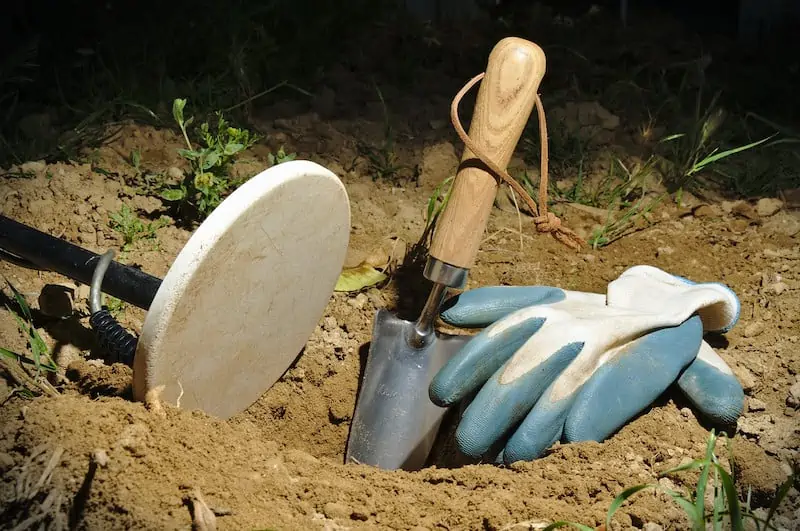
Don’t forget to bring extra batteries or USB battery packs for your detector, depending on what type it takes. Some detectorists like to take along a good quality handheld pinpointer. These can come in handy when narrowing down a target location and you won’t have to dig such a large hole to remove your target. While all pinpointers will find metals, quality does matter. I recommend the Garrett Pro-Pointer AT. This pointer is good for all terrains and all metals and is fully submersible up to 20 feet.
4) Learn Your Detector
Silver makes a specific tone on all metal detectors. Try doing some tests on your metal detector at home if you have any type of pure silver around. You can do tests inside, but electric appliances and lighting can sometimes cause electromagnetic interference. You can take a piece of silver into your yard and wave your detector over it. Note the sound and visual signals the silver gives you. This will help you when in the field.
You can use headphones so you can clearly hear the sounds.
If you have iron discrimination or notch discrimination on your metal detector you may want to use it. Some old homestead sites will have a lot of trashy targets. Beaches, camping areas, and even yards can also have a lot of undesirable targets in them. I recommend starting with scanning your own yard for metals and taking note of how each one sounds and how your detector reads when you find them. This will help tune your ear for silver and silver coins when you are in the field.
5) Fine Tune Your Metal Detector for Silver
Most detectors will have a range of settings for a variety of metals. Make sure your discrimination settings, sensitivity settings, depth settings, and ground balance are all within the range best suited for finding silver items or ore. You should find more information on this within your owner’s manual, which I highly recommend you become very friendly with.
Remember, only adjust your depth as deep as you are willing to dig. It may not sound like much to dig an 8-inch hole, but in certain soil conditions this is quite the chore. I have dug in soft soils and extremely compact soils, even soils with high clay content. They are all different and require different amounts of energy.
6) Finding Deep Signals
It is important to think about depth when metal detecting. Not all targets will be in the first couple inches of soil. Sometimes if a piece of silver or a coin is buried too deeply it can emit a different tone. It may also change tones if another target is nearby. You will likely want to dig all of these “iffy” signals to make sure you aren’t missing any good targets. The more you practice the easier it will be to differentiate the signals. The typical rule is however big your search coil is will be the maximum depth you can search. This is highly dependent upon soil condition.
In my experience, traditional VLF machines that are on the lower price end will not search as deeply as some more experienced and finer tuned machines. Many manufacturers are working on this and have released models that are reputed to search deeper than traditional VLF machines. PI machines will usually search deeper than VLF machines. A good quality pinpointer will also search deeper than a cheaper model.
7) Know the Laws
All states in the United States have their own laws regarding metal detecting. There are many laws from many entities including:
- Federal Laws
- State Laws
- County Laws
- City Laws
- School District Laws
- Park Laws
Each entity will have laws regarding detecting, and some forbid it completely. There is no one law for metal detecting and it is important to check with your local entities to determine where you can detect legally. Where I live in southwestern Idaho, permission is required to metal detect within city limits. The City of Boise requires permits to hunt within Boise limits.
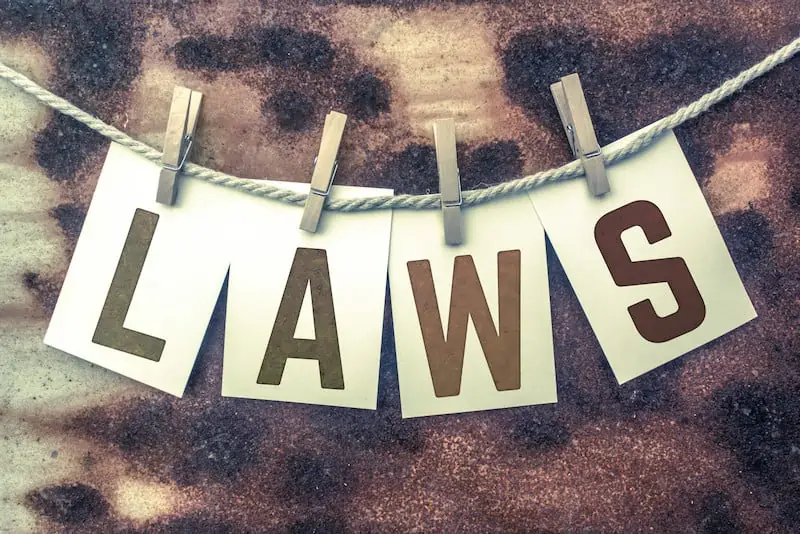
Always learn the laws in your area and be aware of state and federal lands. It is legal to metal detect on National Forest Lands, but not in state parks or national parks. Be aware of private property and always check laws regarding artifact hunting and removal. Always be aware and do your research. The authorities will not accept “I didn’t know” as an excuse. You will get fined!
8) Research Native Silver
The bulk of silver produced is taken from silver bearing ore and will not trigger an alert with most metal detectors. But there is naturally occurring metallic silver, called Native Silver, that will trigger a response. It often occurs in irregular flakes, masses, and wires. It is difficult for the metal detector to find small bits as they are irregularly shaped. The native silver I found looked more like a melted can or some type of twisted aluminum than silver.
But it came up as silver on 3 different brands of metal detectors and with a silver test kit. I also had it looked at by a silversmith. Native silver can tarnish easily so it is not always identified easily. It can come out of the ground gray or black in color. Native silver has been found in a lot of places in the United States including:
- Alaska
- Arizona
- California
- Colorado
- Missouri
- Montana
- Nevada (The Silver State)
- New Hampshire
- New Mexico
- North Carolina
- Oklahoma
- Oregon
- Pennsylvania
- Texas
- Utah
- Virginia
- Washington
Canada, Mexico, Peru, and Norway have also reported native silver being found near cobalt and nickel mining operations.
9) Where to Find Silver Coins
Silver coins are typically found in areas where human habitation has occurred dating mostly from the pre-1800s. You may find some in newer areas where older buildings have been demolished and replaced. But the bulk of them will be found in older sites. Look for areas where homes are (or were) situated dating back to the early 1800s or earlier.
Most silver coins are found in the yards of older homes and abandoned home sites. Don’t be afraid to ask a homeowner if you can metal detect on their property. Always make sure that you detect and dig respectfully. Don’t go making huge holes in their grass. Dig proper plugs and replace them and as much dirt as possible to lessen the impact of your detecting.
10) Where to Find Silver Artifacts
As with coins, silver artifacts are typically found near old home sites. Abandoned home sites are legal to search, assuming your area does not forbid these actions. Make sure to always seek permission if the land is privately owned or if you want to metal detect on someone’s property. Artifacts can sometimes be tricky as some areas have laws in place to protect historical artifacts. It is important to know these laws, too, and if your area requires you to report these finds, always follow the rules.
While it is always great to take your finds home, sometimes they may end up in a museum if they are of historical significance and they may credit you with the find. That’s great, too! You could become a part of your local area’s history.
11) Where to Find Silver Jewelry
Silver jewelry can be found in the same areas as silver coins and artifacts. Check along the walking paths or walkways as these are common places for jewelry to get lost. This applies to places where people currently live or abandoned home sites. You may also want to check beaches if you have metal detector that works well in sandy or saltwater areas.
These areas are popular for recreating, and where people go to play, they often lose jewelry or coins. Remember that not all VLF detectors will work well on wet sand or saltwater but should work well in dry sand. If you want to search in the surf, wet sand, or under the saltwater, you will want a PI machine.
12) Check Nearby Recreation Locations
Places where people recreate, as I stated above, are often treasure troves of lost items. Places where people play in the rivers or streams, lakes, camping sites, walking or biking trails, parks, ball parks, churches, and picnic spots are always good for some loot. Unless the area is very old, you will likely find newer silver items.
Check with your local city hall or historical society to find maps of how things were laid out during the 1700s and 1800s if possible. This can give you a good idea of where the most foot traffic was during this time. You may also find areas where homes once stood.
13) Pay Attention to Vegetation Growth
Vegetation growth and type can indicate when areas were last occupied. Abandoned sites will often have smaller trees and newer vegetation growth where the home once stood as nature has taken over. The trees surrounding the site will be taller and older. Look for stumps which indicate firewood or building materials being taken, as they can lead you to a home site.
Vegetation can often completely obscure a fallen structure from sight, so be sure to pay attention to changes in the vegetation growth and type where you are metal detecting.
14) Look for Sites Under Construction
Sometimes when a site is under construction, the top several layers of soil are disturbed. Many coins and artifacts can be found in these areas. If your local golf course or park is replacing the sod or installing sprinklers, or an old building has been torn down, or a simple addition to an existing structure, you can check with the builders and landowners to see if you can metal detect while no one is working on the site. This could yield several silver items including coins, artifacts, and jewelry. It doesn’t hurt to ask!
15) Plan Your Search Grid
One of the best tips for finding silver, or any high value target, is to search slowly and methodically. Plan a grid out in your head and stick to it. I like to find points of reference like trees, power lines, or sidewalks. Start out between your tree points or next to your sidewalk and thoroughly search going one direction. Then turn around and come back a foot or 2 over, slightly overlapping the previously searched areas.
This way you won’t miss any targets that were on the fringes of your first pass. This method works very well to help you cover large areas and not miss anything. I have used this while searching in the mountains and found it hugely helpful.
16) Don’t Be Afraid to Search Areas Already Detected
If an area has been metal detected previously, it does not necessarily mean it is hunted out. Sometimes detectorists are out to find a specific type of metal and will skip over targets that don’t fall into their specific parameters.
If you find targets near the surface, there is a chance the area has not been detected yet and you should spend extra time making sure you cover as much of it as possible. If you are finding deeper buried targets perhaps the last detectorist didn’t have a detector that scanned as deeply as yours.
17) If You Find a Target, Keep Searching the Same Area
If you have come across a silver coin, you may want to stay around the same area and search is thoroughly. Before you ever backfill your hole, make sure to rescan it a couple of times and rescan the dirt or plug you removed to access your target, too.
Often, coins will be found together or very near each other. I have found this tip to be true with native silver, too. Relics and artifacts can often be found together so keep searching the same area if you find something.
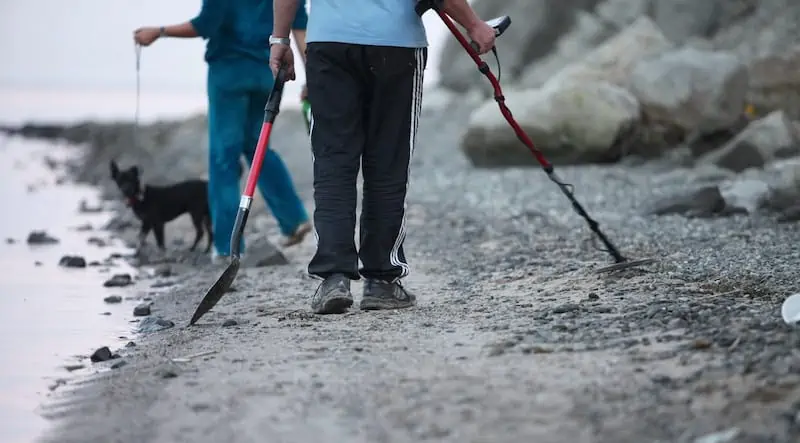
18) Choose a Good Time of Year to Hunt
You can certainly find metals all year round with your metal detector. But if you live somewhere like I do, where it gets over a hundred in the summer and single digits or lower in the winter, you may want to chose to hunt in the spring, summer, and fall.
Spring and fall are the most fun for me because the weather is perfect for my liking. If you like the heat, get out there in the summertime! Just be sure you keep plenty of water with you (no matter what time of year you hunt) and some sunblock and bug spray.
Springtime presents a good opportunity for anything lost over the winter to be near or on the surface when you detect. After heavy rainfall is another good time to check. If you live somewhere that has a rainy season or a monsoon season, check areas after the rains have stopped. The heavy rains can sluff away surface soils and reveal new treasures that were previously too deep to detect.
19) Be Aware of Electromagnetic Interference
Electromagnetic interference can greatly diminish your metal detector’s typical capabilities. This will reduce the operational depth range for all targets. It may also cause your machine to overload and act erratically. Many things can cause electromagnetic interference including overhead or buried power lines, electronic devices like cell phones, or appliances.
Other metal detectors too close to yours can also cause this type of interference. Try to find the cause of this interference and adjust your machine or your search zone. Some metal detectors have built in technology to lessen the amount of disruption from electromagnetic interference.
20) Consider Buying a Silver Test Kit
Especially when you are finding potential native silver, you will want a silver test kit. Sometimes when metals come from the ground, they are almost unrecognizable. And metal detectors can give false readings if the ground conditions are abnormal or another target is nearby changing the signal.
If I would not have had my silver test kit with me, I would have thought my detector was giving me false readings! These kits are inexpensive and can be purchased on Amazon or another online retailer. You can also find at home silver tests or you can take them to a professional for testing.
21) Be Careful When Cleaning Finds
Silver can be easily scratched or damaged when cleaning. Any item that has been in the ground or in salt or freshwater to a period could be severely tarnished. Be sure if you have found an artifact, or if your state requires you to turn in all artifacts, that you leave them exactly as you found them. These should only be cleaned by professionals to avoid damage and retain any historical value they might have.
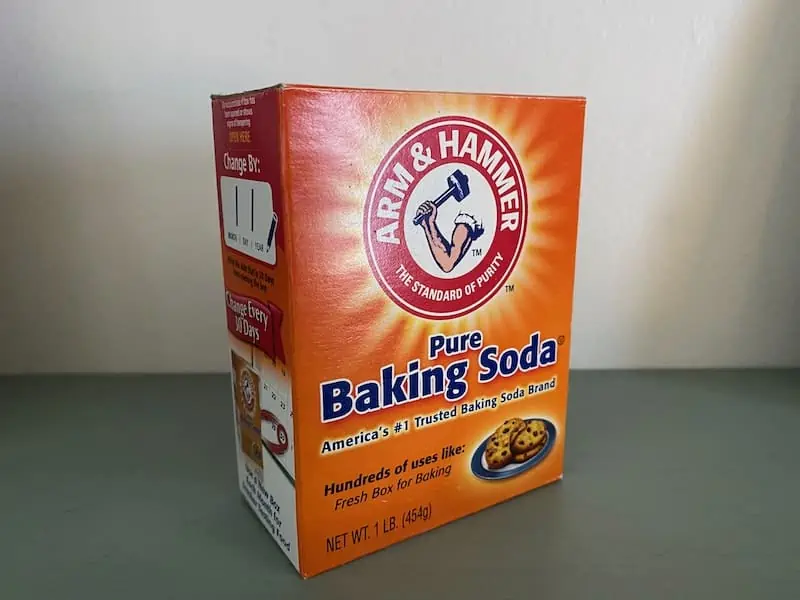
Jewelry and coins can be cleaned with mild acids, baking soda, washing soda, ammonia, white vinegar, distilled water, or olive oil. Olive oil is considered one of the gentlest ways to clean finds as it is so gentle it won’t damage the patina. Be aware though, that olive oil and other mild cleaning agents can take several cycles to fully clean a find.
22) Always Follow the Metal Detecting Code of Ethics
Regardless of what metal you are hunting for, it is important to follow the metal detecting code of ethics:
- Follow the laws
- Respect private property
- Pack out what you pack in
- Dispose of trash properly
- Fill all holes you dig properly
- Leave all personal property, structures, and gates as you found them
- Do not harm vegetation, wildlife, or change natural features
- Report significant historical artifacts
- Be an ambassador for metal detectorists by being courteous and respectful
23) Be Aware of Your Surroundings
Whether you are metal detecting in a park, campground, beach, or someone’s yard, always remain aware of your surroundings. It can disrupt others to hear your metal detector beeping and chirping.
Make sure when you are in a public place you keep your volume down or wear headphones as a courtesy to others. Remote areas like campgrounds you will want to keep an eye out for wildlife, water, steep areas, or other hazards. I don’t typically recommend wearing headphones in these areas unless you are in a group and in a flat area.
24) Be Prepared to Find Trash
There is no doubt. When you are metal detecting you are bound to come away with a huge amount of trash targets. This is not unusual, and you should not get discouraged by it. For every good target out there, it seems like there are a half a dozen trash targets.
The way I look at it is we are helping to clean up all this trash by digging it out and disposing of it properly. You will no doubt find that chunk of silver, coins, or jewelry eventually, but you must know you will find many trash targets, too.
25) Keep a Log
It is a good idea to keep a log of your important silver finds. You should document where, when, and what you found. This can keep you and your finds organized and can help you decipher patterns and figure out places to search.
I take a pen and paper out with me while metal detecting, then put the information into a Word of Excel document when I get home. If your phone has GPS, or you have a GPS device, you can use this to mark where you made a find.
- If you liked this article, please “like” our new Discover Detecting Facebook page.
